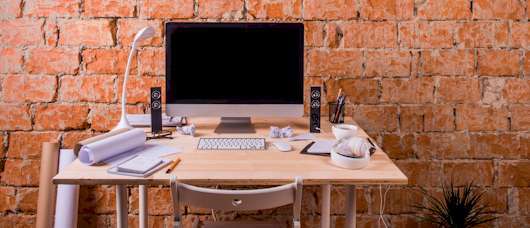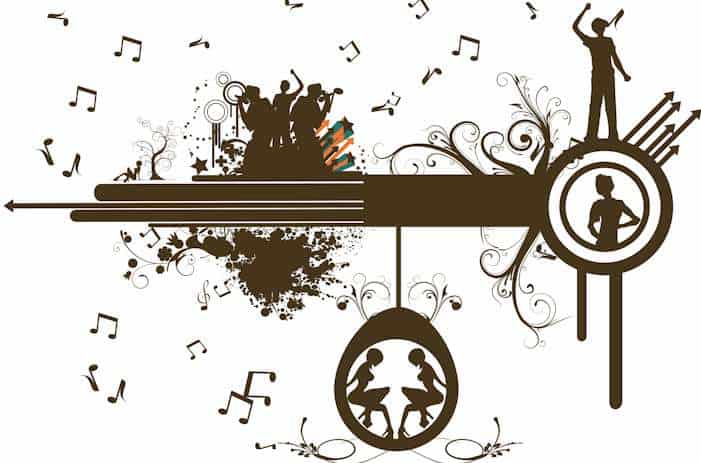Yes, your computer is great for storing sound files such as movies and music and discovering new content online. Moreover, do you know? Your computer can be a versatile audio component if you put in the effort. It can give you an audiophile sound so that you enjoy whatever you are listening to. Here are ten tips on how you can get audiophile sound from your computer:
Contents
Buy an external digital-to-analog converter (DAC)
Computers use digital-to-analog converters (DACs) to convert sound files into analog signals for the speakers. External DACs are superior as compared to your computer speakers and therefore play more accurate and detailed sound from the computer when plugged in. It bypasses the internal DAC. You can get small DACs that are easily portable for your laptops. You can use them with your speakers or headphones.
Read Next: computer speakers making static noise
Adjust the DACs latency
You will notice a very big difference in your sound quality. Latency settings are usually in values of milliseconds or indicated as Minimal, Normal and Safe on the DACs control panel. Always reset it to Minimal or 1 milliseconds. You will notice that the sound is smoother, more detailed and dynamic. Unfortunately, not all DAC drivers provide room for latency adjustment. If yours does, go for it and enjoy your audiophile sound.
Get quality headphones
Using headphones on your computer is the easiest way to get audiophile sound from your computer, as long as the headphones are of great quality. High-performance headphones are very responsive and offer more sound detail. You can even use headphone amplifiers to boost the headphone’s powers for better audiophile sound. Numerous reputable reviews, among them PC Mag and Wired, indicate that some of the best headphones you can get are the Sony WH-1000XM3, Jabra Elite, Beyerdynamic Amiron, Plantronics Backbeat, and Bose headphones.

When combined with an external DAC, headphones could give you audiophile sound that could blow your mind.
Upgrade your computer’s speakers
While some computers have great internal sound systems, you do not have to settle for the speakers that came with your computer if you want to get audiophile sound. You might want to consider getting a sound system that comes with a subwoofer. The only thing you will have to worry about is maybe the speakers taking up a little bit more space and maybe tripping over speaker cables. But that's a small price to pay for excellent audiophile sound. Besides, you can get wireless speakers that you can connect to the computer through Bluetooth or WiFi.

Get high-quality audio system cables
This is often taken for granted by most people, but it is impossible to get quality sound on digital sound players with generic cables. It is not about using whatever you find, ensure that you get high-quality cables for your audio systems.
Integrate your computer into your home sound system
There are two ways in which you could Integrate your computer into your home sound system. You could opt for wired integration or a wireless one. For wired integration, you will have to use a cable to connect the auxiliary port input on your home sound system to the computer's headphone jack. For improved audiophile sound, it is recommended that you use plugin a DAC into the computer's USB port.
For wireless integration, you will have to have a sound system and a computer that can connect to a WiFi network. This will enable you to stream sound files from your computer to the home sound system through the WiFi network without having to need a multi-room system. There are also wireless DACs that you can plug into your computer’s USB and it will use a wireless transmitter to transmit sound to a signal receiver on the home sound system.
Get a multi-room audio system
Alternatively, you could get a multi-room audio system. There are plenty of wireless multi-room audio systems in the market that you could purchase. Some of the best multi-room audio systems include Sonos and Denon HEOS. These systems use the home network to access the sound files on your computer. You can even stream high-resolution audio files. The best part about multi-room audio systems is that you can easily control them from the comfort of your smartphone or tablet through an app.

Download your audio files in high resolution
Even with great sound systems, you can’t get audiophile sounds on your computer if your audio files are of poor quality. Optimize the sound quality of your downloads, and your sound system will complement it. Always check the sound formats and ensure they are high-resolution before downloading. When ripping CDs, always ensure that the sound settings of the program are changed from default to high resolution. On iTunes, you can change the settings on the Preferences tab. Since high-resolution files are usually large in size, you might consider getting an external hard drive so that they don’t take up much space on your computer.
When streaming, use sites that offer high-resolution sounds. It is crucial to ensure that your home network can handle high-resolution streaming without slowing down. Preferably, use ethernet or upgrade your router.
Get rid of the vibrations
You would probably think that vibrations do not affect your sound quality. You will never be more wrong! Ensure that your computer and sound systems are mounted on an anti-vibration platform and place isolation footers under the hard drives and notice the difference in your sound quality. You have to get rid of those vibrations at all costs if you want an audiophile sound
Fine-tune the settings of your audio player software
Finally, always ensure that you fine-tune the settings of your audio player software. Various output methods in the audio software, no matter which one you are using, produce different sound qualities. The choice of output methods, to a large extent, alters the sound quality you get from your computer or audio systems.
You might also want to limit the number of software that are running when you are playing audio files on your computer. No matter how high-speed your CPU is, running so many software at the same time slows down the computer and impacts your sound quality.

HI, John Andrew here. I’ve been an audiophile since I was a little kid. I’m an original member of myaudiolover . It emerged as a way for me to share my passion and knowledge for audio technology. If you’re looking for tips, techniques, and insights about audio-tech, that can enable your productions that professional edge, then MyAudioLover is the place for you!


In the above article, you state the following:
“This is often taken for granted by most people, but it is impossible to get quality sound on digital sound players with generic cables.”
Can you elaborate on this specific item? Are you referring to galvanic isolation? EMI/RFI interference? Specific transmission protocols (USB, Optical, Digital Coax, ANALOG, etc.)?
Because the blanket statement above it misleading at best, flat-out innacurrate at it’s worst.
Also, please elaborate on DAC latency? Are you referring to filters? (Fast, Slow, Rolloff, Apodization, etc?) I’m yet to come across a DAC in my lifetime that measures in millisecond latency or provides for such adjustment (say for the Chord M Scaler) that includes a direct path mode largely only beneficial for audio/visual sync. Latency is not a measure of quality of a DAC. The clock, on the other hand, can be very important and is a feature of every Digital to Analog signal path.
Again, I’m yet to come across a DAC that allows a user to define it’s clock accuracy. DACs, however, that include input protocols like I2S or AES/EBU can inherit clock data from it’s source (presuming it’s superior to the clock used within the DAC) and effectively use this timing data for the analog conversion. Such methods can typically result in a smoother presentation (when reviewing spectral graphs and can be discerned audibly by those with picky ears). I’m not one of those people. But I hear they exist.
I’m not knocking on your post overall. I think many of the items you’re pointing out to a newcomer to the space are important. But less is more here. I’d skip any talk about latency (it’s confusing to us very familiar with the space) and seriously either rephrase or wholesale omit the section regarding cable selection/quality. For digital transmission especially, and given the signal/source chain most viewers of this are likely going to settle on, fancy cables won’t do anything but burn a whole in their pocket and look marginally ‘prettier’ in their setup.
(As a note, I’m currently running amazon basic RCA’s out of a Rebel Amp into the KEF Metas after selling a 2nd hand set of Audioquest cables. The fancy (dither reduction and 2nd harmonic distortion isolation snakeoil) set had absolutely zero quality of life/sound improvement on my listening experience at 10X the cost.
To some extent I agree about using decent connectors, especially with my analog Hifi connections. Capacitance, Inductance, and resistance characteristics of the Analog Connectors, as well as the wire composition, all seem to impact sound quality in a manner which is both objectively measurable, as well as subjective preferable. Is the subjective portion placebo? My experience, along with that of countless audio enthusiast suggest otherwise. As for the objective, this involve frequency transmission and eliminating high frequency rolloff which should be relevant for revealing high performance gear with the capacity to reproduce such within the audible spectrum. Digital connections my be less dependent on these characteristics. However, within reason, I don’t feel one can go wrong with better quality connectors in either instance.
I strongly agree that people like Audioquest, Kimber, and to some extent Panga have gone way overboard with all this connector nonsense, and am not suggesting that one pay $300 for a 3′ USB A to USB B connector. I did spend around $30 for a .5 meter USB connector, and my RCA Connectors cost between $50 and $70. My rational was based on 3 simple concepts. The first involves my limited knowledge, and giving the experts the benefit of the doubt(keeping in mind their objective involving the sale of their products).
Insufficient, perhaps, but why risk a signal bottleneck. The next concept relates to decreasing the probability of signal corruption due to RF, EM and other sources of noise/interference. Cheaper connectors frequently provide inadequate shielding. The last concept involves durability. Good cables tend to be built much better and often carry a lifetime Warrenty. I could have saved enough to pay for a $50 or $70 well reviewed “Namebrand” connector had I not first tried to go the generic budget route. I have thrown away countless cheap cables, while. I haven’t had a single issue with the Better Quality Namebrands. I doubt the Really expensive stuff provides an additional advantage, other than prestige. But am also convinced in all the advantages of spending a little bit more on a reasonably priced, and respected Namebrands product. Just Not from a Merchant who offers 10 levels of more expensive options. The way I see it, this kind of company, has every reason in the world to make sure their $500 product exceeds their $40 product. Sorry for getting so far off the topic, but I find the whole connector debate to be compelling and worthy of discussion. My desktop has got to be getting exposed to significant vibration..So excellent suggestion.